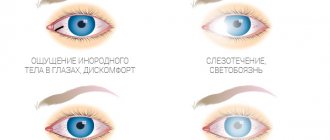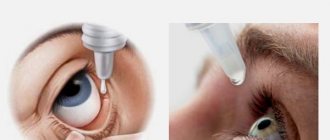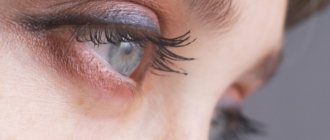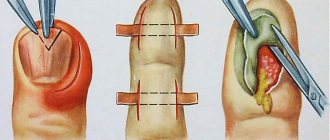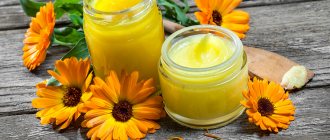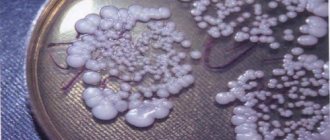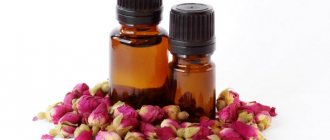Treatment of cataracts with resin
The resin should be fir or pine, but not spruce. The product is collected from a tree trunk. To do this, they pass by hand and determine by touch the cortical areas, which are particularly elastic and resilient. Here you need to make cuts and collect the protruding liquid in a pre-prepared container. This juice is the resin.
The resulting liquid is mixed with vegetable oil. The most effective use is sea buckthorn oil, but refined sunflower oil is also suitable. To prepare the composition, take 3 parts vegetable oil and 1 part resin, stir thoroughly. Used as eye drops. Dosage – 1 drop in each eye once a day. The course of treatment is 30-40 days.
To treat cataracts by using resin, you should remember that it is used only in fresh form. Long-term storage leads to loss of beneficial properties of juice. In addition, the resulting composition causes a burning sensation that must be endured.
The greatest effect of treatment with oleoresin is achieved in the early stages of cataract development.
Causes and symptoms
The causes of cataracts are varied. Among them, genetic predisposition, toxic poisoning, radiation damage, and smoking should be noted. There are congenital (hereditary, intrauterine) and acquired cataracts.
Acquired cataracts, in turn, are divided into:
- Post-traumatic (mechanical, chemical, thermal, radiation, toxic effects, for example, due to contusion or penetrating injury to the eyeball, electrical effects (lightning strike or electric current during a short circuit, ionizing, ultraviolet or infrared radiation (workers at smelters, blast furnaces, glassblowers) ), toxic effects ( nitro dyes, naphthalene, thallium, trinitrotoluene, dinitrophenol ).
- Complicated cataracts that develop as a result of eye diseases: iridocyclitis, uveitis (inflammation inside the eye), glaucoma, progressive high myopia, retinal detachment.
- Cataracts that have developed as a result of common causes: metabolic diseases (diabetes mellitus, hypocalcemia, galactosemia), nutritional disorders (anorexia nervosa, cachexia), dystrophic myotonia, genetic syndromes).
- Medicinal cataracts (long-term use of medications). First of all, such drugs include: hormones (glucocorticoids), miotics (cholinesterase inhibitors, used, for example, for glaucoma), drugs containing zinc, mercury, silver, gold, phenothiazine derivatives, as well as tranquilizers and sedatives, such as diazepam.
- Age-related cataracts, the development of which has multiple causes. Age-related cataracts are part of the natural aging process, when destruction (breakdown of substances) increasingly prevails over restoration (synthesis of substances, regeneration). This disease sooner or later develops in many people, usually in both eyes to varying degrees of severity. The cause of the development of age-related cataracts may be the weakening and cessation of breathing of the lens.
With age-related cataracts, the content of ascorbic acid (vitamin C) in the blood and intraocular fluid is reduced and there is a lack of riboflavin (vitamin B2).
“The main symptom of cataracts is visual impairment of varying degrees, up to its complete loss.”
Treatment of cataracts with bile
Bile is an equally popular folk remedy in the treatment of cataracts. The use of bile for this disease is described in the chronicles of healers.
The well-known healer Porfiry Ivanov gives his recipe using bile. He claims that instilling 1 drop of bile into each eye daily completely eliminates cataracts. One condition is that bile is taken only from live pike. The drug is instilled before bedtime. The course consists of 10 procedures with an interval of one day, a break of 10 days and repetition. If it was not possible to immediately repeat the course, then treatment should be resumed no earlier than after 2 months.
Bile causes discomfort, expressed by pain and burning, but this period must be endured.
Symptoms
Depending on the type and stage of the disease, symptoms can vary: from discomfort in the eye area to serious impairments in visual acuity and quality.
The main symptoms of acquired cataracts:
- Decreased visual acuity is the most common, but not obligatory symptom. For example, if the clouding affects the peripheral part of the lens (far from the center), then this does not affect vision in any way. But cloudiness in the central part or covering the entire lens will be accompanied by decreased vision.
- Myopia - the clouded lens thickens (swells) and, as a result, increases the refraction of the light beam; as a result, the image is focused closer - not on the retina of the eye (as happens normally), but in front of it. Near vision is good, but distant vision is unclear and blurry. If a person already suffered from myopia before the development of the pathology, then this phenomenon only intensifies.
- A veil before the eyes - a clouded lens disrupts the passage of the light beam, or rather creates its scattering. Therefore, objects appear cloudy, as if through a stream of water.
- Frequently changing glasses - improvement in near vision with cataracts allows a person to read and write without glasses, but this phenomenon is short-lived, because over time, growing cataracts lead to severe deterioration of vision.
- Doubling of objects occurs due to non-uniform dispersion of the light flux.
- Changes in photosensitivity - patients do not tolerate bright light well; they note that vision is better in cloudy weather. People also experience glare.
- Deterioration of color perception - the world becomes gray and dull.
- Change in pupil color – an initially black pupil may become yellow, cloudy or even white (when it swells).
At the onset of the disease, visual acuity usually does not suffer; blurring, double vision, and a feeling of “floaters” appear before the eyes. Over time, the symptoms intensify and the severity begins to decrease. It is at this stage that patients usually turn to a specialist.
You can suspect congenital cataracts in a child based on the following symptoms:
- presence of strabismus;
- white color of the pupil;
- the child does not respond to toys unless they make a sound.
Even if specialists in the maternity hospital or parents do not find signs of cataracts in the child if the corresponding symptoms are present, upon reaching the age of one month, all newborns must undergo a routine examination by an ophthalmologist, where the disease is likely to be detected.
Collections of medicinal herbs
In folk medicine, there are many recipes for the treatment of cataracts. They are based on collections of medicinal herbs.
Recipe 1
Collection based on horsetail grass is quite common. To prepare it, take 30 grams of dried and crushed grass. Strengthening the therapeutic effect is achieved by including stinging nettle (10 grams), knotweed herb (15-20 grams are enough). Horsetail should be dried and finely chopped, and nettles should be taken fresh and young.
Preparation: mix all ingredients and take 10 grams of the resulting mixture. Pour boiling water (1 cup), reduce heat to low and cook for 3 minutes. Then the mixture must be cooled and strained.
Application: the infusion is consumed before meals, 100 ml at a time. The course is 14-21 days.
Recipe 2
To make another collection you will need several ingredients:
- 10 grams of seaweed;
- 10 grams of dried string herb;
- 10 grams of motherwort;
- 15 grams of chamomile;
- 15 grams of corn silk;
- 20 grams of chokeberry;
- 6-8 red hawthorn fruits.
Preparation: mix all components and pour boiling water at the rate of 1 tsp. herbal mixture per 250 ml of boiling water. The infusion is left for 5 hours and then filtered.
Application: 3 tbsp. l. The infusion is consumed after meals 3 times a day. The course is 30 days.
Recipe 3
In the following recipe you need to mix 40 grams of crushed oregano herb and 40 grams of common cocklebur.
Preparation: mix the herbs and pour 500 ml of boiling water. It is better to leave the mixture in a thermos for 2 hours, or use a dark glass container. Then the infusion should be filtered.
Application: 60-70 grams of infusion are taken after meals 3 times a day. In addition to this method of treatment, to enhance the effect, take mummy diluted in beetroot juice half an hour before meals - 0.2 g of product per 50 ml of juice. The regimen looks like this: a 10-day course, then a break of 5 days and another course. The pattern can be repeated up to three times.
Recipe 4
Aloe juice (2 parts), Kalanchoe (1 part) and viviparus (1 part). In this case, the juice of aloe leaves should be freshly squeezed.
Preparation: the components are thoroughly mixed and used in the form of drops.
Application: instill 2 drops of the mixture into each eye 3-4 times a day. The effectiveness of the product is especially high at the initial stage of cataract development.
Recipe 5
For another collection, you need 20 grams of Rhodiola rosea roots, 20 grams of tall rose hips, 6-8 rose hips, 20 grams of dried nettle and 15 grams of red hawthorn fruits, 1 tsp. dried St. John's wort, 250 ml of water.
Preparation: herbs and fruits are mixed and poured with boiling water. Leave for 30-40 minutes and strain the mixture.
Application: 50 ml of infusion is drunk before each meal for 21 days.
Recipe 6
A collection made up of the following ingredients is useful for cataracts:
- birch leaves;
- lingonberry grass;
- plantain grass;
- linen:
- knotweed grass;
- series;
- horsetail;
- stinging nettle.
These components are taken one piece at a time. St. John's wort herb requires 3 parts, and rose hips and red rowan, 2 parts each.
Preparation: mix all the ingredients, take 60 grams of the resulting mixture and pour a glass of boiling water. Infuse the herbs for 15 minutes, then strain 2 times.
Application: drink 1/4 cup of infusion before meals 3 times a day. The course of treatment is 1 month.
On the subject: Restoring vision - how to improve vision naturally?
How to treat cataracts at home with folk remedies
The lens loses transparency due to changes in its natural structure. The process is irreversible. When using traditional medicine, it is important to remember that they cannot completely cure both acute and chronic diseases. However, it is quite possible to slow down cataracts for months and years.
Based on herbal decoction
Medicinal plants occupy a leading position in the fight against cataracts. The preparation of various decoctions is possible thanks to herbs in dried and fresh form:
- Calendula. 2 tablespoons of flowers are poured into 300 ml of boiled water. Cover the container with a lid and let it brew for 4 hours. To prevent the heat from disappearing, the dishes are wrapped in a blanket or scarf. According to the folk recipe, the medicinal calendula tincture (decoction) is decanted and lotions are made.
- Chamomile, rose hips and burdock leaf. One tablespoon is taken from each set of herbs. The bouquet is poured with half a glass of water (150 ml), and then brought to a boil over low heat. At this stage, preparing the eye drops will take three minutes. Apply drops to the affected eye 3 times a week. In particular, the remedy is afraid of senile cataracts.
- Healing with eyebright. A tablespoon of herb is additionally chopped into smaller particles. The resulting mixture is poured into a glass of water, boiling to a boil for 3 minutes. The medicine is used 2 times a day as an eye wash or taken orally.
- Sweet tears. At the initial stage of cataract development, according to traditional medicine, onion juice dissolved in May honey has an effective caustic effect. The resulting solution is used as eye drops. Apply two drops morning and evening for a month.
In folk methods, agave deserves a separate category due to the variety of medicinal properties. Aloe for cataracts can be used both in pure form and in a mixture of herbs. The latter is highly effective in combination with freshly squeezed viviparus and Kalanchoe juices in a ratio of 2:1:1. The liquid is instilled into the eye with cataracts, two drops at least 4 times a day. The treatment period is unlimited.
Using the method of Professor Neumyvakin will help speed up cell regeneration using hydrogen peroxide in the amount of 5 drops per tongue per day.
For the treatment of cataracts, aloe in its pure form is used when there are three leaves of the plant. The juice is squeezed into a dark glass bottle and placed in this form in the refrigerator for two weeks. After this period, the liquid is diluted with saline (1 ml of juice accounts for 10 ml of water for injection). The drug for cataracts, prepared according to a folk recipe, is used as eye drops for three months.
To effectively treat cataracts with herbs, it is recommended to take a week's break every two months.
Oils
Traditional methods of treatment involve the use of not only herbal infusions, but also oils. Methods can be very diverse: from taking turpentine baths to lotions according to folk recipes for cataracts.
Castor oil is popular in combination with baking soda. The mixture is prepared in a ratio of 1:2, which allows you to apply hardened castor oil particles under the eyes and on the upper eyelids.
In its pure form, castor oil is used not only as eye drops (1 drop 2 times a day), but also in the form of a poultice using gauze, which is pre-soaked in oil. The compress is applied to the eyes for two hours. The procedure is repeated for 40 days.
It is recommended to use hexane-free castor oil in a slightly warmed state.
Help from potato sprouts
They use an ancient recipe for glaucoma and cataracts. The folk method is based on potato sprouts, which are collected and dried.
A tablespoon of dry plant is poured with 200 ml of alcohol, leaving to infuse in a place inaccessible to sunlight for two weeks. Upon completion of the process, take 10 ml of the tincture before starting a meal.
Potato sprouts relieve cataracts gradually, so it is important to be patient. The course lasts at least six months.
With continued treatment with traditional methods, after a couple of months, sticky, colorless discharge comes out of the eyes. This is a natural process that increases visual acuity.
Bee products
Treatment of cataracts with honey has gained wide popularity due to the content of vitamins and microelements necessary to nourish the lens. Nutrients help stop clouding. However, for optimal use, it is recommended to use fresh honey collected in early May.
- To prepare the medicine, you will need to dilute honey in sterile water in a ratio of 1:3.
- Then use the eye drop solution three times a day.
- The course lasts from 21 to 30 days.
If the product irritates the conjunctiva of the eye, then the use of the folk recipe should be abandoned.
Due to the absence of an allergic reaction to propolis, it becomes possible to prepare a decoction from it. To do this you need:
- Bring distilled water to a boil.
- Then cool to 50 degrees.
- As soon as the water is ready, a volume of 100 ml is poured into a thermos, where 10 g of propolis powder is first added.
- Shake the container periodically.
It is important to remember that the shelf life of liquid in the refrigerator does not exceed 7 days.
Treatment of cataracts with honey-apple drops
A friend who is fond of traditional medicine advised one woman with cataracts to be treated with honey-apple drops. After three months, the woman’s vision improved significantly.
Take an apple and cut off the top. Pick out the middle with something and pour honey into the void. Then cover the apple with this cut off top. Two days must pass before this folk remedy for eye cataracts is ready. Everything that comes out should be poured somewhere and simply dripped into the eyes twice a day, two drops. You can also use another medicine - honey-protein. Here's how it's prepared. Take an egg that a chicken has just laid and leave it on the table for two days, then boil it for half an hour. Peel the egg, but only so that the white is intact. Then cut in half and remove the yolk. Place the egg white halves with the dimples facing up and cover with honey. So let it stand for one day. Drain the resulting liquid. Keep refrigerated.
You can alternate these two medications for months - drop 1-2 drops into both eyes 2 times a day.
Recipes for treating cataracts with folk remedies at home
These methods will significantly reduce the unpleasant symptoms of the disease. To achieve the best healing effect, it can be combined with medication. The main condition, in this case, will be the approval of the attending physician.
Important! What medications are used to treat cataracts without surgery can be found here.
Honey treatment
Let's consider the method of treating cataracts with honey:
- you need to take a dessert spoon of honey and three tablespoons of warm water. Mix everything. The water must be boiled;
- Instill the resulting solution into the eyes three times a day, a drop in each eye.
Honey is considered a product made from natural substances and the treatment is accordingly effective. It especially helps in the initial stages of eye cataracts.
Attention! Treatment of cataracts with honey is contraindicated in diabetes mellitus!
WARNING: Honey may cause allergies. Get your allergist's approval before using this product.
Treatment of eye cataracts with chicken eggs
Take an egg from a domestic chicken, throw it into boiling water and cook until hard. Cut off the top of the boiled egg and remove the yolk. Turn the egg white over and bake in the oven for half an hour at 120 degrees. Before placing the protein in the oven, you need to add sugar (1 teaspoon) inside. The medicine is sugar that melts inside the egg. They need eye drops five times a day. If the sugar becomes thick, dilute it with boiled water, preferably warm. This medicine will cause the eyes to water, thereby clearing the eyes of accumulated mucus, calcium and salt.
ATTENTION: It is worth remembering that almost all decoctions are brewed from dried herbs and fruits of various berries.
Honey drops with apple
To prepare these drops, you need:
- Wash the apple thoroughly, scrape out the pulp by cutting off the top.
- Pour honey into the middle of the apple and close with the cut off top.
- Leave for two days.
Then open the top and pour the resulting medicine into the prepared jar. You need to drip this product into your eyes 5 to 6 times a day.
Honey drops with onions
Honey is very helpful in treating cataracts. Especially if you add a little onion to it. To prepare such drops, you need to squeeze the juice from one onion and dilute a spoonful of honey in water. Water must be filtered. Add onion juice to honey water - the medicine is ready! You should put honey drops in your eyes no more than three times a day for one month.
ATTENTION: The jars in which the prepared drops are stored must be sterilized.
Medicinal extracts for cataracts
Give yourself onion drops every day. To do this, simply squeeze the juice from the onions and dilute with water in a ratio of 1 to 1. It is best to take distilled or at least purified water. If you start to cry while squeezing the juice from the onion, then this is even good, since the tears wash your eyes well.
By the way, you can add dandelion juice to enhance the effect. Wash the dandelion leaves, squeeze a little juice out of them and mix with onion drops.
You will also need honey drops. To do this, simply dilute honey with distilled water in a ratio of 1 to 1. It is best to take acacia honey or, even better, special honey - with diluted propolis. Honey drops, unlike onion drops, can be prepared in advance. You need to store them in the refrigerator, but no more than three days.
When you start treating cataracts, first use onion drops, and after 45 minutes you can start using honey drops. Apply into both eyes 3 times a day. The course of cataract treatment lasts for a month. If necessary, you can continue treatment after a week of break, but it is unlikely that you will need it.
Honey and other bee products
Treatment of this eye disease with honey has gained great popularity due to the rich composition of this beekeeping product. Useful substances can stop eye clouding. But for the effectiveness of a particular recipe, it is recommended to use fresh honey, which was collected in early May. To prepare the medicine, you need to dilute honey in clean, sterile water. This will require 1 part honey, as well as three parts liquid. After this, the finished composition is used 3 times a day for instillation into the eyes. The duration of therapy is 3-4 weeks. If such a remedy begins to irritate the conjunctiva of the eye, then you will have to stop using such a folk recipe.
Propolis can also be used to treat cataracts. To do this, you will need to make a decoction based on this ingredient. Bring distilled water to a boil, cool it to 50 degrees. Pour 100 ml of prepared water into a thermos, where you should first put 10 g of propolis in powder form. The container should be shaken periodically. The shelf life of the medicinal product in the refrigerator is no more than 7 days. A medicinal composition is used for instillation into the eyes.
Protein drops
You need to hard boil an egg, cut it in half lengthwise, and remove the yolk. Wash the protein and leave it to dry, fill it with sugar and close it back. Throw in the oven for half an hour. Drain the resulting liquid somewhere. Use by dropping two drops three times a day. Store the medicine in the refrigerator for no more than three days.
You need to add about half a teaspoon of honey to the boiled protein, then leave it for 24 hours and drop it into your eyes for 4 months.
As eye drops, you can also use a mixture of aloe juice with honey and distilled water - one teaspoon each. It is necessary to bury the composition in both eyes, one drop at a time, three times a day.
Treatment of cataracts with honey
Treatment of cataracts with honey is very popular in folk medicine. Honey contains substances that can stop the development of cataracts and improve vision. An eye microsurgery doctor at one center advises using May flower honey for this, but not a dark color, but as light as possible.
In the first half a month, honey drops should be prepared in a ratio of 1:4, that is, 1 part honey and 4 parts distilled water. However, such drops are stored in the refrigerator for no more than three days. Apply a drop in each eye up to five times a day. If honey drops burn your eyes too much, make the ratio of honey to water higher. As you continue to treat cataracts with folk remedies, increase the concentration of drops, bringing the ratio to 1:1, or almost 1:1, by the end of the month.
The patient determines the course of treatment for cataracts himself, depending on his personal feelings. If there is improvement and there are no side effects, then treatment can be continued for more than four weeks.
Attention: honey drops are contraindicated for diabetes and allergies to honey.
Treatment of cataracts with vegetables and fruits
- Mix fresh juice of parsley, celery, lettuce, carrots in a ratio of 1:1:1:4, take one hundred milliliters before meals in the morning, lunch and evening. A simpler version of this remedy: drinking parsley and carrot juice according to the previous scheme.
- Squeeze juice from ripe or frozen blueberries, dilute it with purified water 1:2 and drip the resulting solution into your eyes just before bed.
- Regular consumption of mulberries, raw, dried or boiled, helps treat cataracts without surgery and copes well with age-related vision deterioration.
Treatment of cataracts with dill seeds
Cataracts can actually be cured using the following folk method. For this you will need 2 bags that will hold water well, for example, made of flannel fabric. The size of each of them should be approximately 5x5 cm. Place 3 teaspoons of dill seeds in both bags. After that, throw them into a metal mug with boiling water and boil for a couple of minutes. Now the eye compresses are ready, all you have to do is wait until they cool down so that there are no burns. When they become warm and tolerable to the skin, apply to your eyes, cover with a warm cloth on top and hold for 15 minutes or until they become completely cold.
It is best to treat this way before bed.
Treatment
Conservative (drug) therapy
Indicated only in the initial stages of the disease, aimed at preventing the progression of cataracts, since changes in the lens are irreversible.
To treat cataracts, drugs are used that improve metabolism in the tissues of the lens and prevent lipid peroxidation (there is a theory that changes in the lens occur precisely because of this):
- "Quinax" is a modern drug that slows down the development of cataracts and helps stabilize them;
- “Oftan-katachrome” – improves the metabolism (nutrition) of the lens;
- "Taufon" is an older drug that also enhances the metabolism of lens tissue.
Cataracts usually progress without surgery.
Surgical treatment
The only effective way to treat cataracts, since the processes of lens opacification are irreversible, and drug treatment only slows down their development.
The essence of surgical treatment is extraction (removal) of the clouded lens.
Types of operations
Intracapsular - the lens is removed along with the capsule. This operation is quite traumatic and is used extremely rarely today (if the ligaments holding the lens are damaged).
Extracapsular - an incision is made in the cornea, then the capsule is opened and the clouded lens is removed, after which sutures are placed on the cornea of the eye. This operation is also not popular now, because the incision is quite large.
Ultrasonic phacoemulsification is the main method of cataract removal in modern medicine.
The essence of the operation is to crush the clouded lens with ultrasound, after which fragments of the crushed lens are sucked out. To perform such an operation, a very small incision is sufficient, which does not need to be sutured.
Phacoemulsification can be performed on an outpatient basis or with the patient hospitalized for only 1-2 days. There are no age restrictions. Local anesthesia is usually used.
There are also other modern surgical methods:
- laser extraction;
- bimanual cold phacoemulsification;
- quailasis – hydromonitor destruction of the clouded lens.
At the preoperative stage, it is necessary to choose a method for subsequent vision correction. Possible:
- spectacle correction;
- contact lenses;
- An artificial lens – an intraocular lens (IOL) – is implanted into the eye immediately after cataract removal.
IOL is the best method of correction, because it provides good visual acuity and does not require further wearing of glasses or lenses. There are many types of intraocular lenses, they differ in the method of fixation and cost.
Only an ophthalmologist can choose the optimal type of operation for the patient and the method of further vision correction, taking into account individual characteristics and financial capabilities.
Treatment of cataracts with herbs
Take the same amount of coltsfoot leaves, burdock and drop cap, pour 4 tablespoons of this mixture with half a liter of boiling water, place it in a place where light does not penetrate, and there the composition will sit for 120 minutes. Apply eye lotions three times a day. You can also water your eyes with this solution, one teaspoon at a time.
Even if vision is completely lost, it can be restored. There is one berry in folk medicine that is good for cataracts and restores vision. This is a mulberry berry, or it is also called mulberry. Eat in any quantity for health!
Various folk recipes
- A good remedy for treating cataracts is pine or spruce resin. It is instilled for cataracts, 1 drop per month .
- Good for improving vision and juice from young grape vines. It is instilled 2 drops 2 times a day.
- You can make eye lotions from fennel or dill seeds. They must be sewn into linen bags and brewed with boiling water. The cooled bags are applied to the eyes for 15 minutes twice a day.
- You can prepare eye drops using silver water. To do this, a three-liter glass jar is filled with spring water and a silver object is dipped into it for 10 days. On day 5, a fresh aloe leaf is cut and placed in the refrigerator for 5 days. After this period, the aloe is crushed and filled with silver water with the addition of a spoon of honey. The resulting mixture is instilled into the eyes up to 5 times a day .
- You can infuse 1 large bay leaf in a glass of boiling water. In the mornings and evenings, this infusion is used to wash the eyes.
- Compresses made from the following composition are very useful for cataracts: 1 part honey, 2 parts dandelion juice and 1 part onion juice. The resulting mixture is infused for 4 days in a cool, dark place.
- Prepare a mixture of 20 ml beet juice, 70 ml carrot juice and 10 ml chicory juice. The resulting mixture should be drunk every evening before bed .
